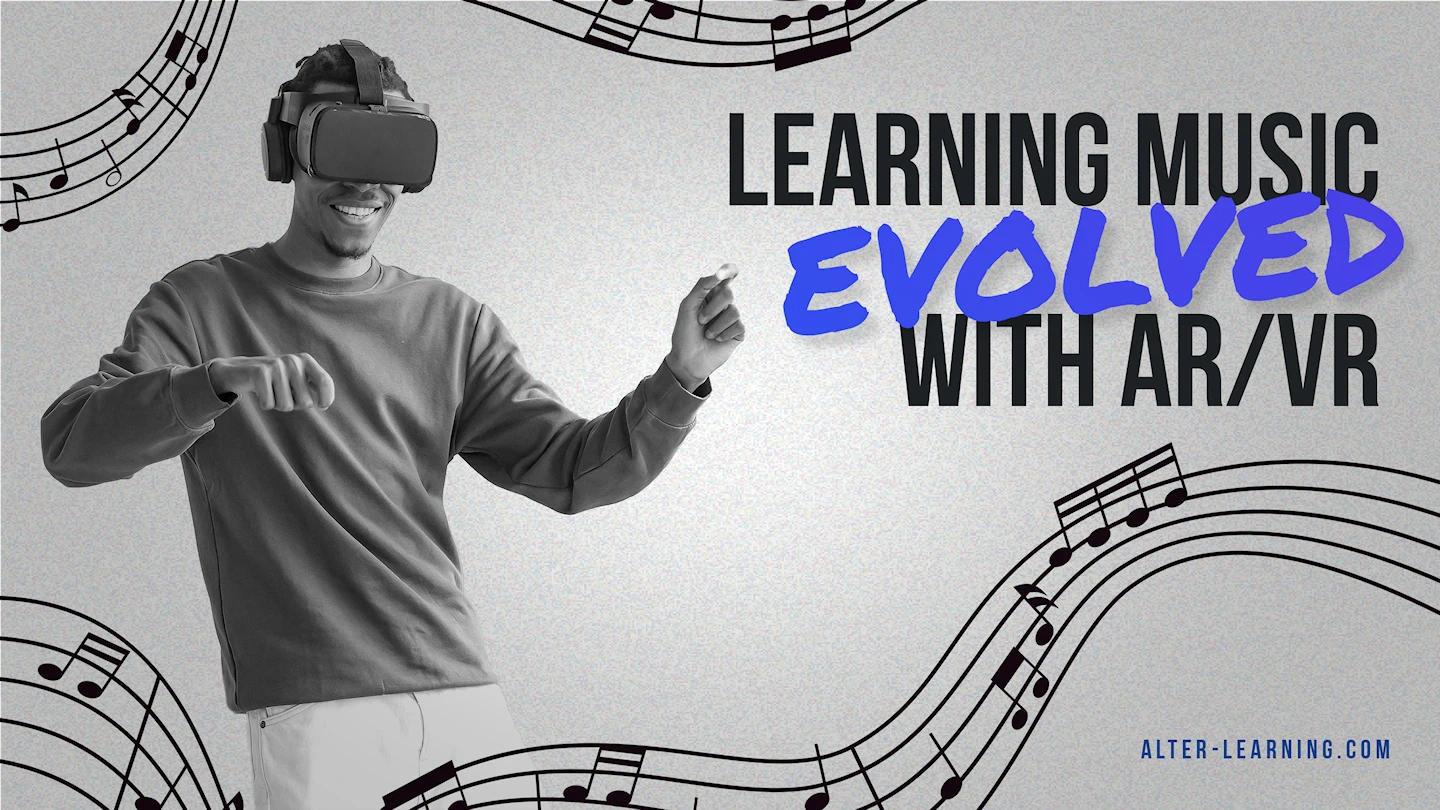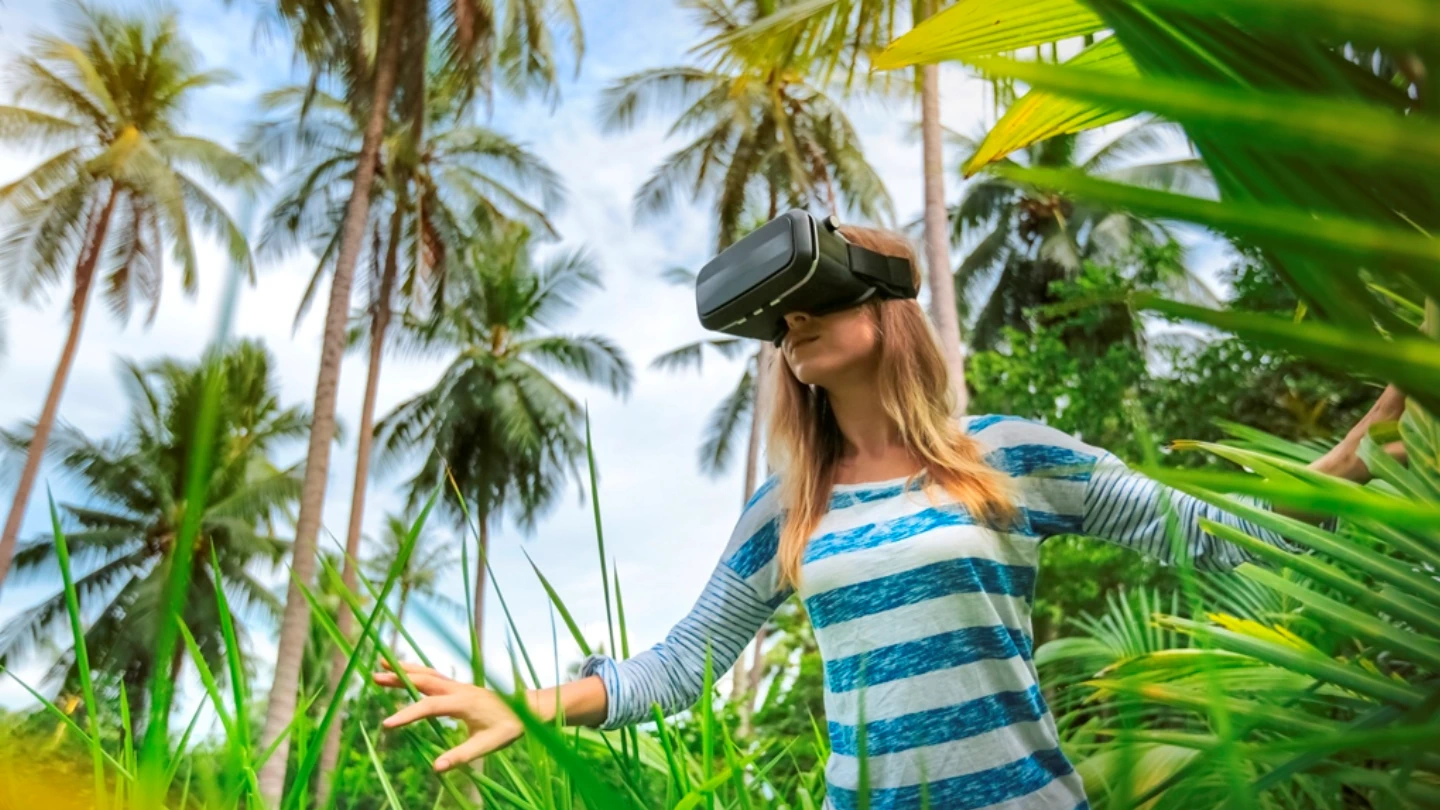What is Extended Reality?
Extended Reality (XR) encompasses Augmented Reality (AR), Mixed Reality (MR), and Virtual Reality (VR). The Interaction Design Foundation gives a simplified explanation of Extended Reality (XR). In short, XR is an umbrella term for any technology that alters reality by adding any digital elements to the real-world environment.
What are the Differences Between AR, MR, and VR?
- AR (Augmented Reality) – With AR, you can see virtual objects and information overlaid in the real world, making learning more interactive and engaging. (i.e. A Hybrid Classroom)
- MR(Mixed Reality) – MR is a blend of physical or real-world elements with digital or virtual elements in which the physical and digital elements can interact. (i.e., Haptic Gloves)
- VR (Virtual Reality) – When you put on a VR headset, you’re transported to another place entirely. You can explore new environments, interact with virtual objects, and create music you have never imagined.
How XR is Changing Music Education
The application of VR/AR to music education can transform the field in numerous ways. Here are a few of our favorites:
- Learning an instrument is now accessible to everyone; the cost of an instrument or instrument rental is no longer an obstacle to learning how to play your favorite instrument. Try it out in the Music Hall.
- Practice your instrumental or vocal skills in a virtual room with a virtual teacher guiding you.
- Compose songs and play them with virtual instruments, which you can control with a keyboard and mouse, haptic gloves, or in a virtual recording studio.
- Create virtual worlds, design your instruments, and even perform in front of virtual audiences.
- Collaborate with other students from around the world, sharing ideas and creating music together.
- Students can get immediate feedback on their playing, helping them improve faster and stay motivated to improve their skills.
Challenges and the future
Of course, like any new technology, there are still some challenges to overcome. Not everyone has access to AR and VR equipment yet, and some schools lack the internet connectivity to participate even if they have access to the equipment.
As always, keeping our students safe is our priority. As is true with any new technology, there’s still a lot to be done to ensure that these tools are used safely and effectively.
But one thing is clear – the future of music education is bright, and AR, MR, and VR are going to play a big part in shaping it. So, whether you’re a student just starting on your musical journey or a seasoned pro looking to take your skills to the next level, get ready to take flight with AR and VR. The sky’s the limit, and the music world is about to get a whole lot more exciting!
Summary
Extended Reality (XR) is an umbrella term that includes Augmented Reality (AR), Mixed Reality (MR), and Virtual Reality (VR). XR technologies enhance reality by integrating digital elements into the real world.
- AR overlays virtual objects in the natural environment, enhancing interactivity (e.g., hybrid classrooms).
- MR combines physical and digital elements, allowing for interaction between the two (e.g., haptic gloves).
- VR immerses users in entirely virtual environments, enabling exploration and interaction with digital objects.
In music education, XR transforms learning by:
- Making instrument access more accessible and more affordable.
- Providing virtual practice spaces with teachers.
- Allowing composition and performance with virtual instruments.
- Offering immediate feedback for skill improvement.
- Enabling collaboration with global peers.
- Facilitating the creation of virtual worlds and performances.
Despite challenges like access to technology and internet connectivity, the potential for XR in music education is significant. As these technologies evolve, they promise to make music learning more engaging and accessible for all.




